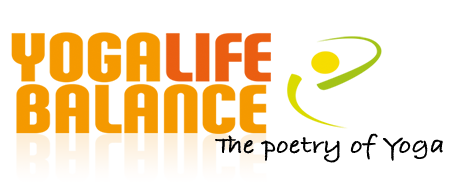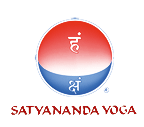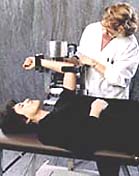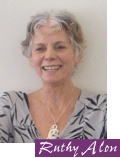



The Bones For Life program is based on the idea that a dynamic walking style is the natural movement which stimulates bone growth.
The purpose of the program is to develop a strong springy step that directs a vibrational force through a correctly aligned skeleton. For example, when the foot impacts the ground in walking this transmission of force through the skeleton enables the nutrients in the blood to penetrate into solid bone. It is the rhythmic pulsations of a lively step that enables the nutrients in the blood to penetrate the solid tissue of the bones.
About The Program:
The program offers a series of gentle movement processes that teach you how to organise the skeleton into a safe weight-bearing posture and co-ordinate harmonious movement, both of which are essential for stimulating bone growth and strength.
Through simple, effective movement processes, the Bones For Life program will gradually and safely teach you how to:
Even people with poor fitness or fragile functional conditions can safely experience the impact of the springy pulsations of bone-building activity. Training to safely sustain body mass in dynamic movements and in lifting weights is done in accurately designed configurations on the floor, in a chair, standing against a wall, or using a harness to engage all body parts proportionally in harmonious coordination. For example, the harness, used in class, acts to integrate all body parts into a reliable axis for anti-gravity movements, such as running or jumping.
History:
The Bones For Life program was developed to help avoid or reverse osteoporosis. Studies in the US have indicated that by 2020, one in two Americans over the age 50 will be at risk of fractures from Osteoporosis or low bone mass.
Osteoporosis is a disease in which the density and quality of bone is reduced, increasing the risk of fracture. Is it not a normal condition of the aging process as previously thought.
Recent research from NASA discovered that astronauts returning from space experienced weaker bones. Humans are not used to a zero-gravity environment so the body does not understand the requirements for building strength in its bones. In this environment, new cells are not generated.
Old cells continue to complete their life cycle as usual. However, without a new generation of cells, the population of bone cells keeps diminishing. The bone becomes weak and is at risk of fracture.
The good news is that NASA has shown it is possible to restore bone density even after it has been weakened. This is due to the bodies ability to adapt to the conditions of its environment. On returning from space, astronauts undergo pulsations of springy pressure to the body and through the re-confrontation with gravity, the bone re-generates. This can only be achieved if the skeleton is geared to navigate an efficient and continuous trajectory of posture, which can sustain this force of pressure.
 |
| NASA - using vibrations with the MRTA to assess bone strength in returning astronauts |
For the general public, this new approach carries an encouraging message. The process of bone disintegration can be reversible under certain conditions.
The Bones for Life program allows us is to reconstruct the functional conditions that are capable of stimulating re-growth of bones, even after they have been impoverished.
In the living body, bones are also very much alive. When you think of bones, you might imagine a hard, brittle skeleton. In reality, you bones are living organs. They are alive with cells and flowing with body fluids. Bones are constantly renewed and grow stronger with good diet and physical activity.
Researchers consistently point out that lack of vigorous movement is one of the reasons for the failure of the mature body to absorb essential minerals from the blood into the bones.
The good news is that you are never too old or too young to improve your bone health. There are many things you can do to keep bones strong and prevent fractures. Regardless of age, a diet with enough calcium and vitamin D, together with weight-bearing physical activity every day, can prevent problems later.
 The purpose of the Bones for Life program is to reconstruct the functional conditions that are capable of stimulating re-growth of bones, even after the bones have been impoverished.
The purpose of the Bones for Life program is to reconstruct the functional conditions that are capable of stimulating re-growth of bones, even after the bones have been impoverished.
Ruthy Alon Bones For Life was developed by Ruthy Alon to help avoid or reverse osteoporosis. The program is based on the teachings of Dr. Moshe Feldenkrais.
Ruthy Alon began working with Moshe Feldenkrais in the 1960s in Israel, and is considered one of the foremost teachers of The Feldenkrais Method. She is also the author of "Mindful Spontaneity."